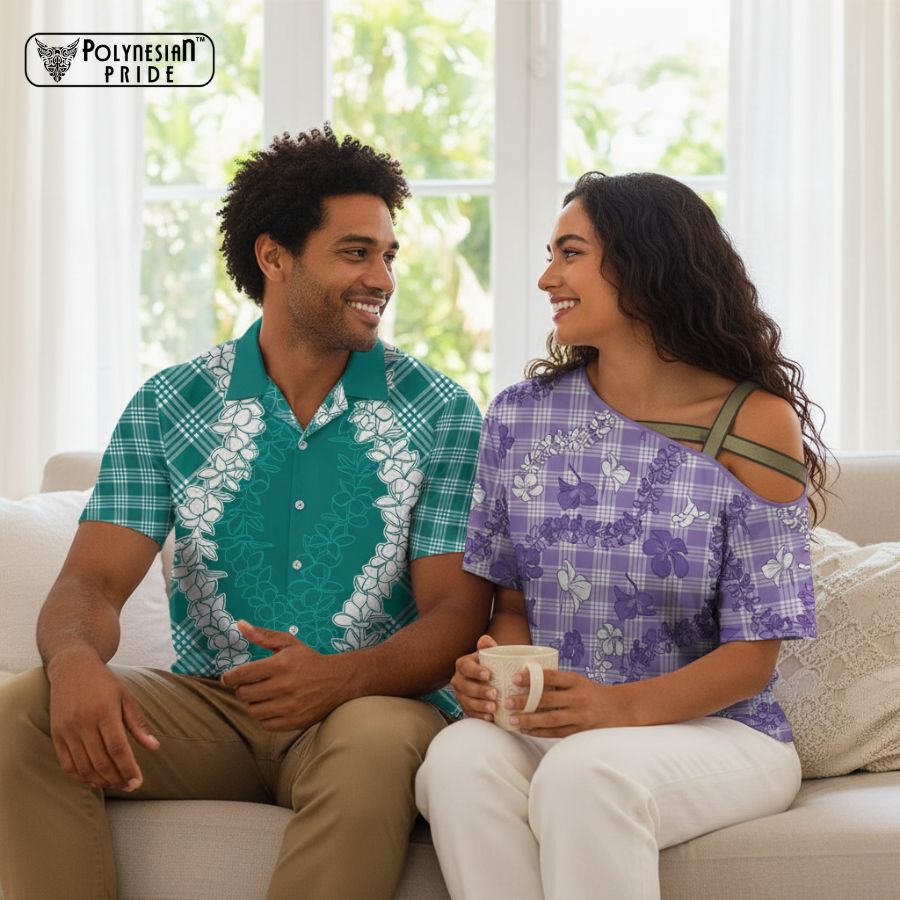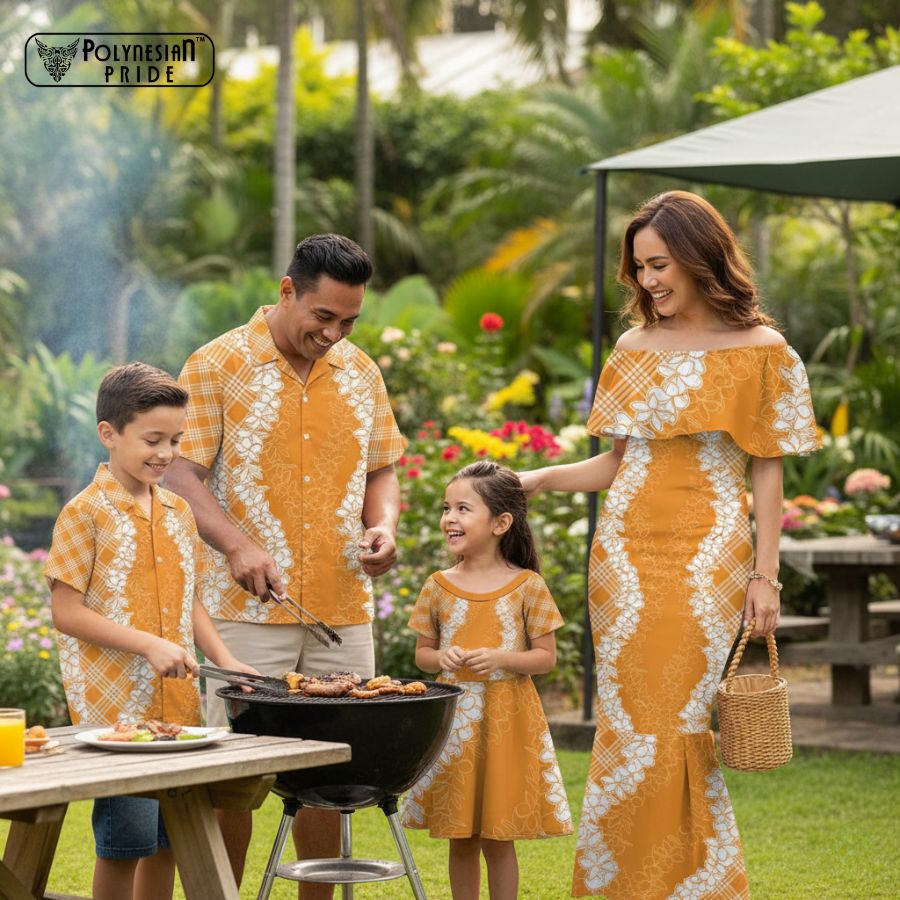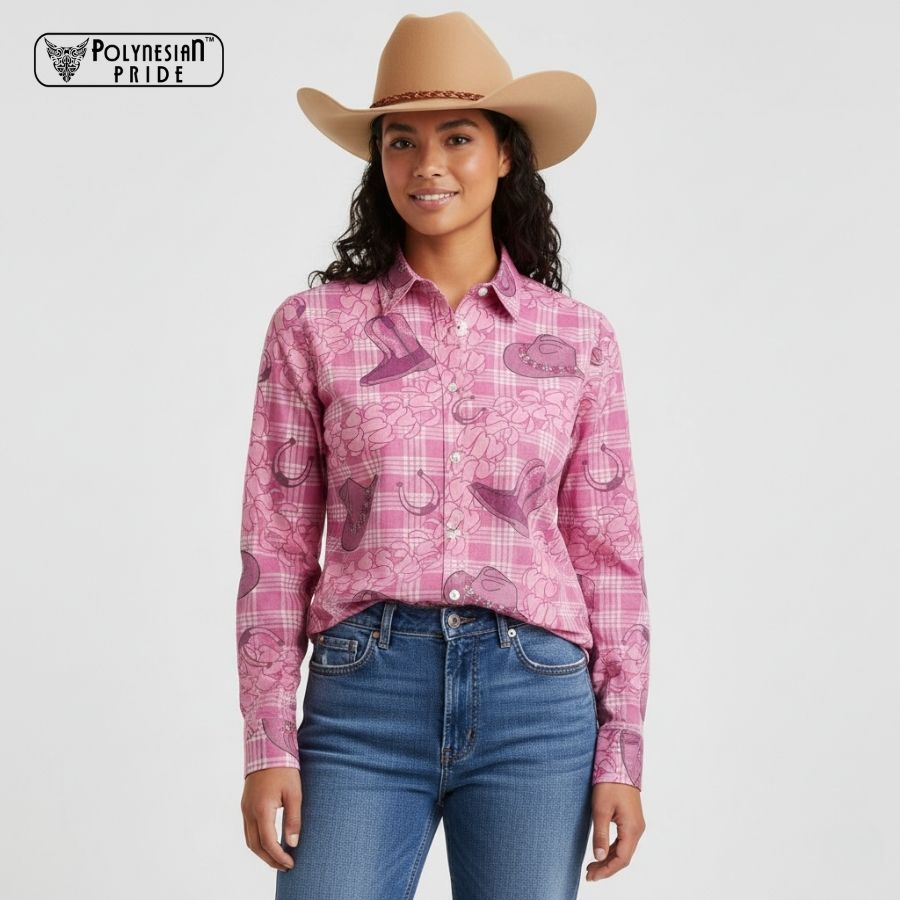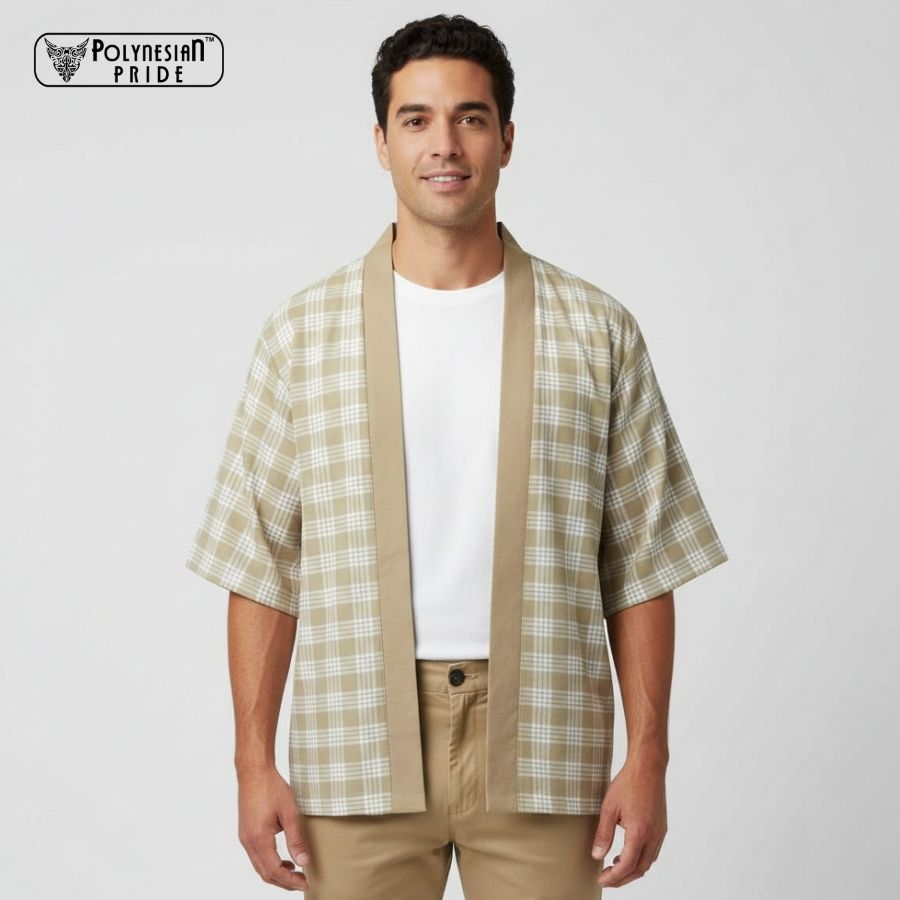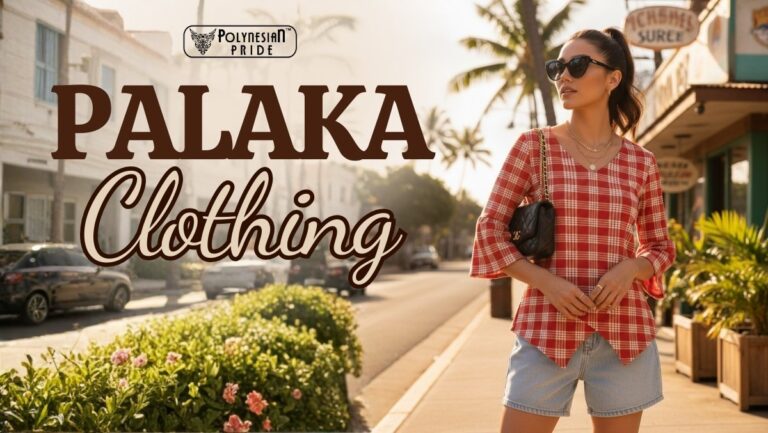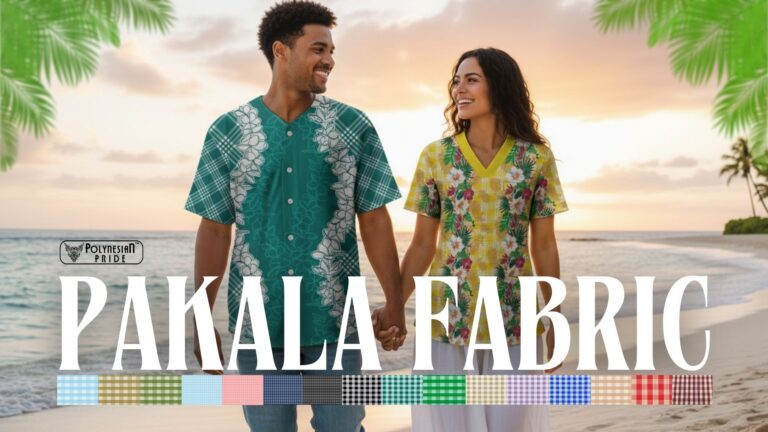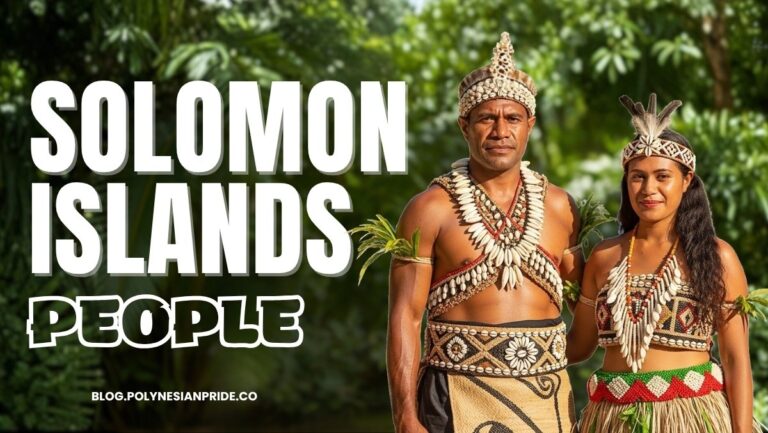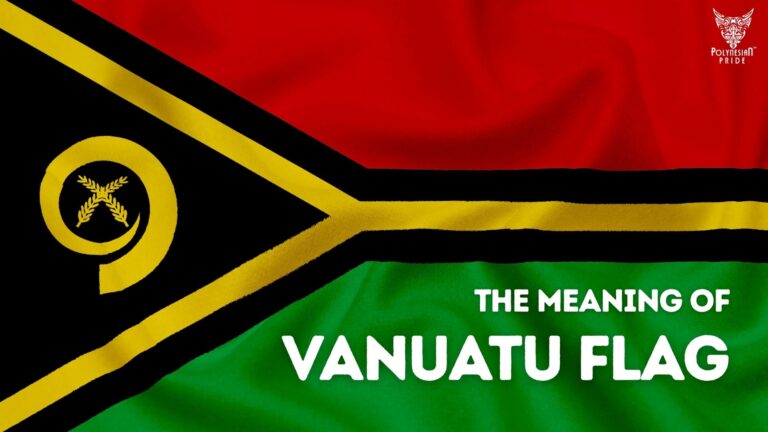Palaka Vs Plaid: What’s The Difference Between Them?
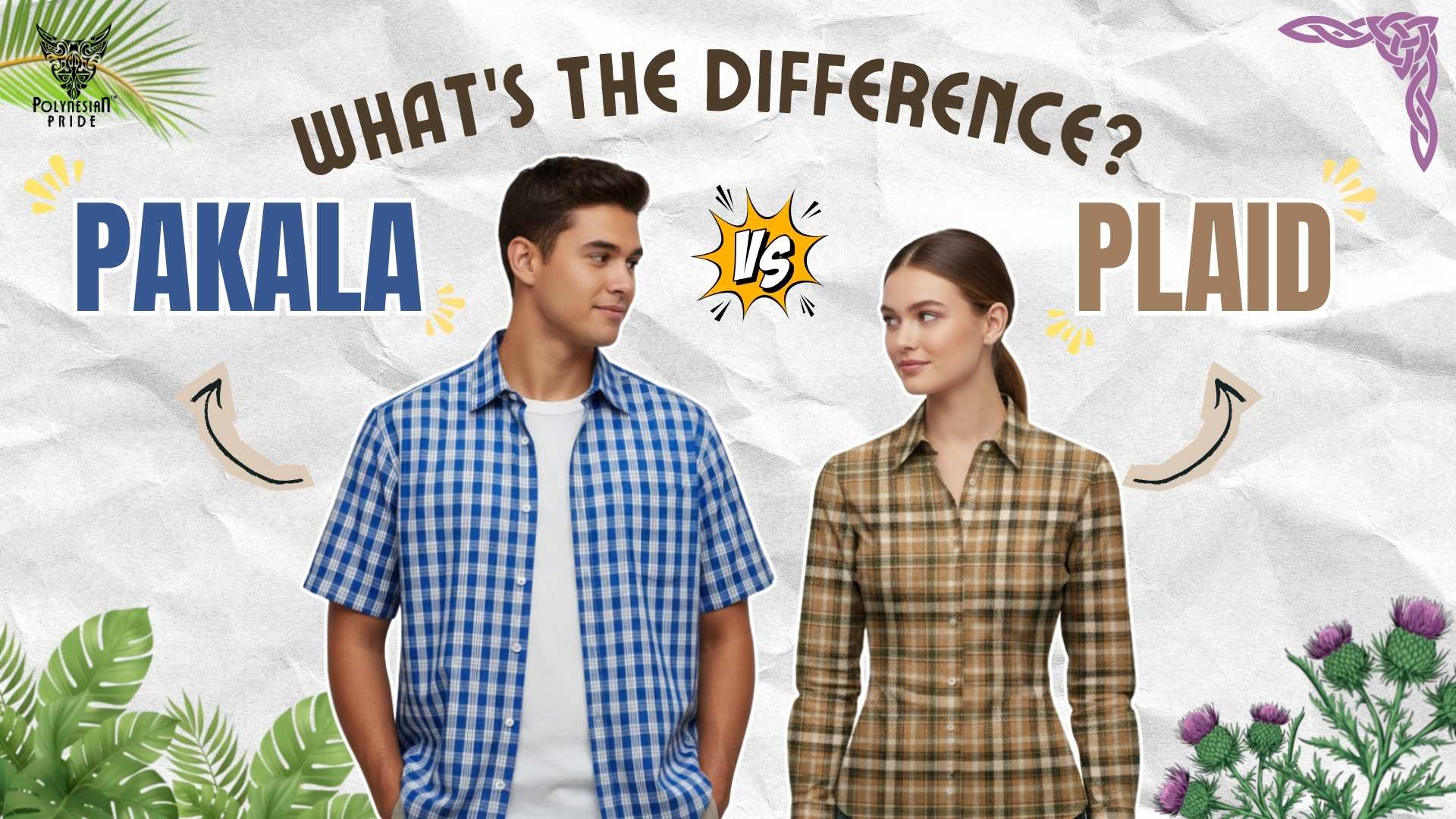
At first glance, palaka and plaid look similar, but their stories and meanings are entirely different.
Palaka is a Hawaiian check pattern with deep roots in plantation-era life, while plaid comes from the long tradition of Scottish tartans. Understanding where each one comes from makes it easier to see why they feel so different in style and vibe.
This guide breaks down the difference between palaka vs plaid – from their origins, patterns, materials, cultural meaning, to how to choose and wear each.
What Is Palaka?
Palaka is a classic two-color check pattern closely tied to Hawaiian history and everyday island life.
It first appeared in the late 1800s as durable workwear for plantation laborers, paniolo, and local families who needed something comfortable in Hawai‘i’s warm climate.
Over time, the pattern became a cultural symbol: simple, recognizable, and deeply connected to the working-class roots of the islands.
For many Hawaiians, palaka represents community, heritage, and a sense of pride in local identity.
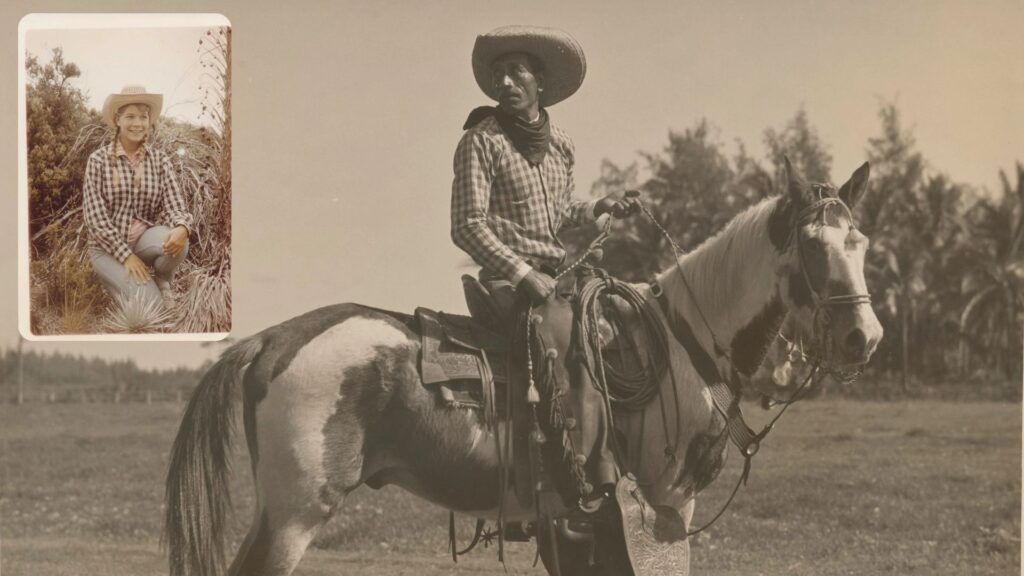
What Is Plaid?
Plaid is a broad family of woven check patterns that traces its origins back to Scottish tartans.
Each tartan historically represented a specific clan, region, or community, which is why plaid carries such a strong sense of tradition in Western culture.
Over time, plaid spread far beyond Scotland and became a global fashion staple used in shirts, skirts, jackets, and everyday wear across many seasons.
Today, people see plaid as classic, versatile, and expressive, with countless variations and color combinations.

While palaka and plaid may look similar from afar, their unique histories and cultural significance set them apart. These differences are important when choosing the right pattern for your style or occasion.
Key Difference Between Palaka and Plaid
Origin and Cultural Background
Palaka and plaid may look similar at first glance, but they were born in entirely different eras and cultural landscapes. When you look closely at palaka vs plaid, the contrast in their timelines and cultural foundations becomes even clearer.
Palaka
- Timeline: In the late 1800s in Hawaii.
Palaka appeared in Hawai‘i in the late 1800s, during the rise of the plantation economy. Around this time, imported yarn-dyed check fabrics—mostly from Japan and the US were adopted as practical workwear for field laborers and the paniolo (Hawaiian cowboys) who were already active by the mid-1800s.
By the early 1900s, palaka had become one of the most recognizable everyday garments across the islands.
Its timeline is tied to Hawai‘i’s multicultural working-class history, not ancient tradition, which is why it carries a grounded, community-driven meaning.

Plaid
- Timeline: 3rd–5th centuries in Scotland.
Plaid, in contrast, dates back over a thousand years. Early tartans appeared in Scotland as early as the 3rd–5th centuries, and by the 1500s, tartan patterns had become closely associated with clans, family lines, and regional identities.
Plaid has centuries of symbolism behind it – royalty, rebellion, heritage, and later, global fashion long before Palaka ever existed.

So while plaid evolved over many centuries in Europe, palaka’s history is relatively modern, shaped within the last 120–150 years through plantation life, paniolo culture, and Hawai‘i’s unique blending of communities.
Pattern Structure
Although both patterns fall under the “check” family, their construction is noticeably different.
Palaka
Palaka uses a simple, even check layout made from two colors crossing at consistent intervals. The vertical and horizontal lines have equal weight, creating a calm, balanced grid.
Traditionally, the look feels clean, uniform, and almost minimalistic, which is why Palaka has such a steady, grounded visual identity. It doesn’t shift much from one version to another, and that consistency is part of its charm.
Plaid
Plaid, however, follows a layered stripe structure.
Instead of evenly spaced lines, plaid combines thick and thin stripes that overlap in multiple directions, often using several colors at once.
When these layers intersect, they form different tones, giving plaid more depth and variation. This is why plaid feels more expressive, seasonal, and sometimes bold, depending on the color set and stripe arrangement.

In short, palaka is orderly and uniform, while plaid is dynamic and multi-layered, giving each pattern a very different visual energy.
Material Traditions
One of the most critical differences between palaka vs plaid is how they are made.
Palaka
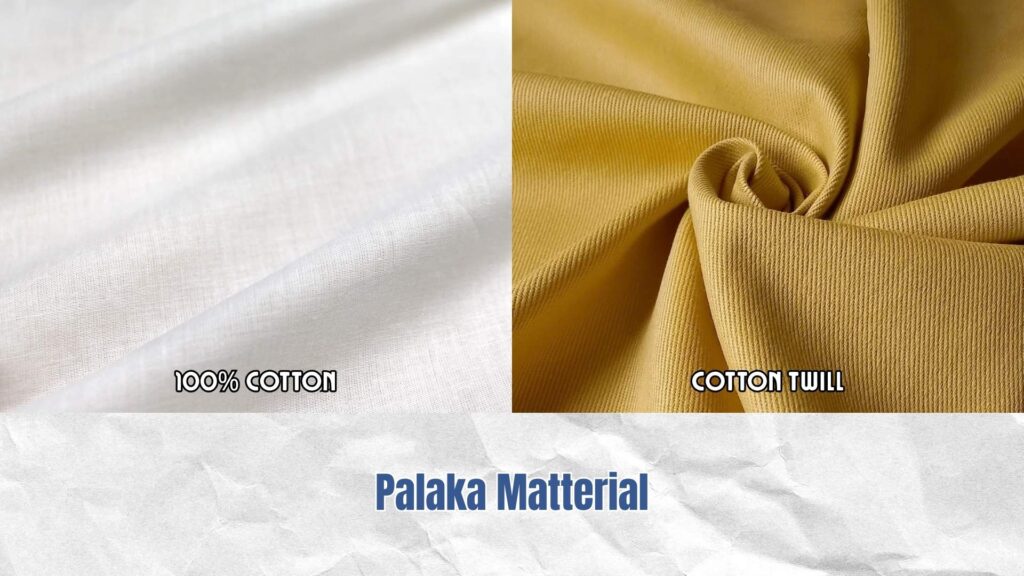
Palaka was historically made from lightweight cotton or cotton twill, explicitly chosen for Hawai‘i’s warm, humid climate.
It needed to be breathable, sturdy, and comfortable enough for long hours of outdoor work, which is why natural cotton became the standard.
Even today, most palaka-inspired pieces stay within this material range, which is soft, airy, and easy to wear in tropical or summer weather.
Plaid
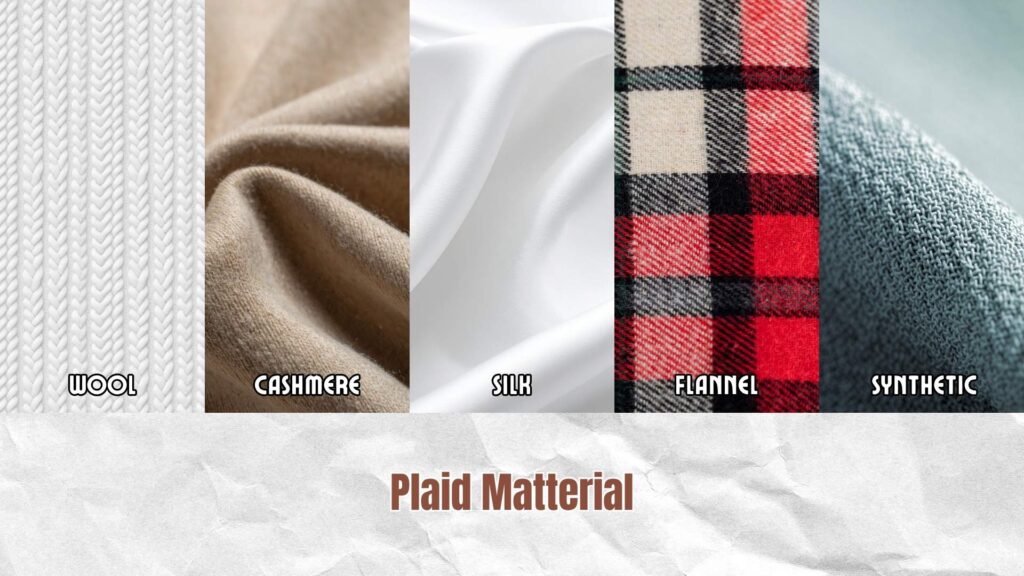
Plaid, on the other hand, developed in regions with much cooler temperatures.
Traditional Scottish tartans were woven from wool, giving warmth, durability, and insulation. As plaid spread globally, it expanded into many materials, including flannel, cotton, linen, silk, and even synthetics.
They result in versions suitable for fall, winter, or transitional seasons. Its material identity is far more varied, influenced by fashion trends and climate.
In essence, palaka stays lightweight and breathable, while plaid spans from warm woolens to casual cottons, depending on where and how it’s worn.
Color Approach
Palaka
Palaka traditionally stays within a simple two-color palette, most commonly white paired with blue, red, or brown. This limited color range gives palaka its calm, understated look and keeps the pattern consistent across generations.
Modern interpretations may add more variation, but the essence of palaka is still rooted in clean, minimal color combinations that reflect everyday island life.
Plaid
Plaid, in contrast, uses a much broader and more expressive color spectrum. Depending on the tartan or fashion style, plaid can include muted earth tones, bright multi-color mixes, deep greens and reds, or soft seasonal palettes.
Because plaid layers multiple stripes with their own colors, it creates richer tonal shifts and greater visual depth.
In short, Palaka’s colors are steady and minimal, while Plaid’s colors are diverse, expressive, and often seasonal.

Vibe & Aesthetic Between Palaka vs Plaid
Palaka
Palaka carries a naturally relaxed, grounded feel. Because of its simple two-color grid and roots in Hawaiian everyday life, palaka gives off an effortless, down-to-earth vibe.
It feels warm, approachable, and tied to the islands — the kind of pattern that fits effortlessly into beach days, casual outings, community events, or anything with a laid-back mood.
Palaka’s aesthetic leans toward comfort, familiarity, and subtle cultural pride rather than making a loud fashion statement.
Plaid
Plaid, in contrast, shifts its personality depending on the color palette and stripe layout. It can look classic and preppy, rugged and outdoorsy, cozy and autumn-inspired, or even bold and expressive.
Plaid has a wider emotional range, which is why it appears everywhere – from winter flannels and school uniforms to streetwear and holiday outfits.
Its aesthetic is more dramatic and varied, influenced by seasonal fashion trends.
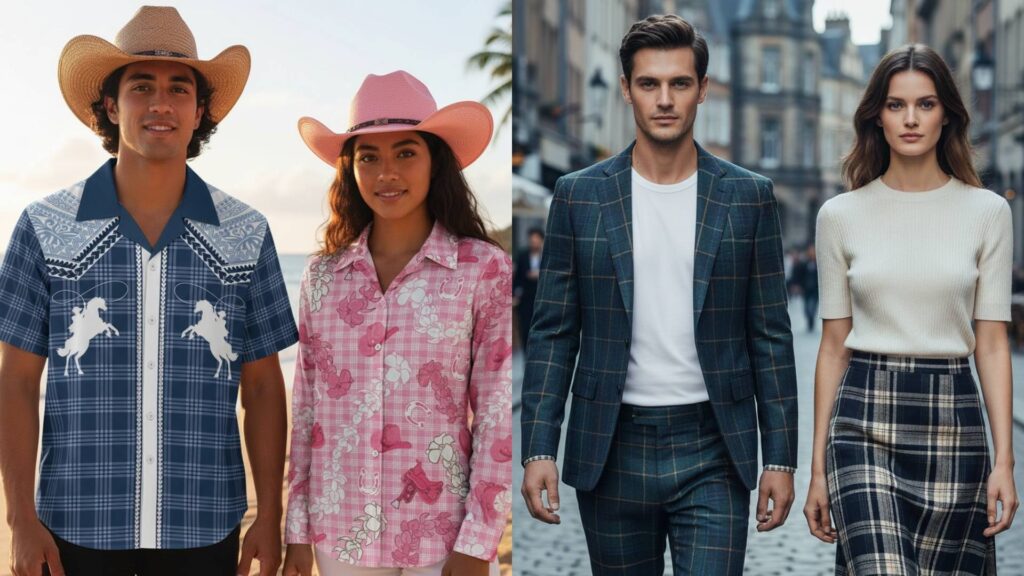
So while:
- Palaka feels simple, steady, and culturally rooted
- Plaid feels flexible, stylistic, and mood-driven, adapting easily to different fashion identities.
Now that we’ve highlighted the key differences, you can easily choose the pattern that suits your lifestyle and climate.
Whether you need something for warm weather or cooler seasons, each pattern has its advantages. Here’s how to decide between palaka and plaid.
When to Choose Palaka vs Plaid?
Choose Palaka When:
- You want a relaxed, island-inspired vibe.
- You’re dressing for warm or tropical weather.
- You prefer simple, clean check patterns.
- You want a subtle touch of Hawaiian heritage.
- You’re styling casual outfits for beach days, outdoor events, or everyday wear.
Choose Plaid When:
- You want more color variety or expressive patterns.
- You’re dressing for fall, winter, or cooler climates.
- You like bold, layered stripes with visual depth.
- You need something classic, cozy, preppy, or seasonal.
- You want a versatile pattern that fits many styles and occasions.
How to Style Palaka?
When it comes to palaka vs plaid, palaka shines best in warm climates and relaxed, island-inspired looks — and the styling really leans into that effortless vibe.
Everyday Casual
- Pair a palaka shirt with denim shorts or light-wash jeans for an easy, laid-back look.
- Women can layer a palaka kimono over a simple tank top or slip dress for a relaxed island vibe.
- Men can style a short-sleeve palaka shirt with neutral chinos for a clean everyday fit.
Paniolo (Hawaiian Cowboy) Inspired
- For a paniolo-style twist, pair a long-sleeve palaka shirt with sturdy denim, a classic belt, and work boots.
- Roll up the sleeves and keep the fit slightly relaxed — the look should feel practical, effortless, and ready for the ranch.
- Add a subtle accessory like a leather bracelet or a simple hat if you want the vibe without going full Western.
Matching Sets & Family Looks
- Palaka works great in coordinated outfits because the pattern is balanced and straightforward.
- A couple of sets or family-matching outfits feel unified without looking too busy.
Dressing for Warm Weather
- Because palaka is usually made with lightweight cotton, it’s ideal for beach days, barbecues, community events, or any outdoor gathering.
- Keep accessories simple, since Palaka already delivers a subtle pattern that doesn’t overwhelm the outfit.
When You Want a Cultural Touch
- Choose palaka pieces to honor Hawaiian heritage in a soft, modern way.
- Works especially well for local events, island-inspired celebrations, or occasions where you want something meaningful but not formal.
Modern Brands Reimagining Heritage Patterns
As heritage patterns return to modern wardrobes, many brands are finding new ways to keep cultural textiles alive.
Instead of simply repeating old designs, they’re updating silhouettes, softening fabrics, and using new color stories while still honoring the meaning behind each pattern.
With palaka in particular, there’s a growing appreciation for its roots in Hawaiian life and a movement toward reintroducing it in forms that feel wearable, versatile, and culturally respectful.
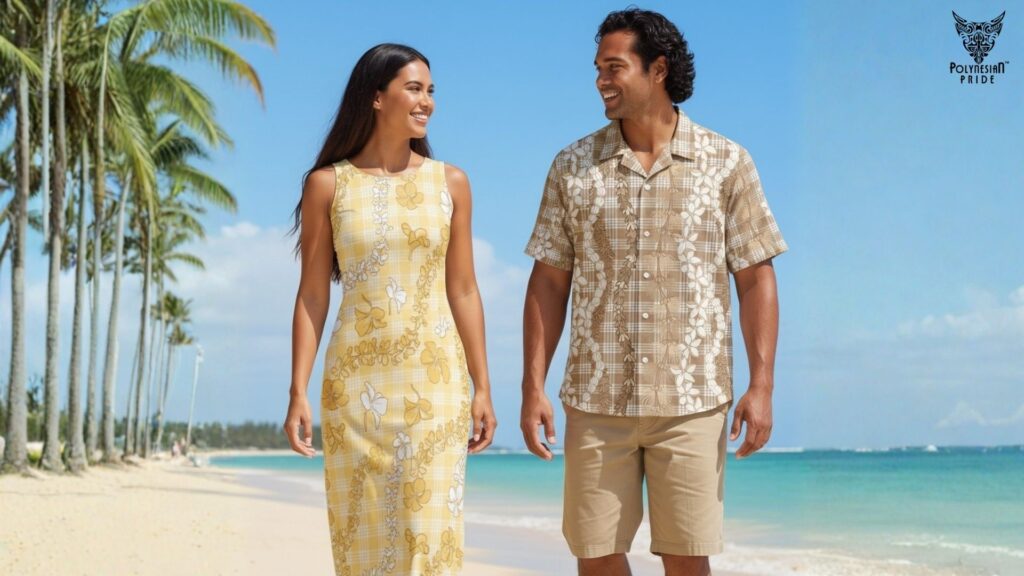
This is where Polynesian Pride Shop steps in with a standout approach. The brand doesn’t just revive Palaka – it reimagines it. Here are the key things that make their approach special:
- Fresh fusion of tradition: Classic palaka checks blended with Hawaiian lei motifs in each island, adding artistry and cultural depth you rarely see elsewhere.
- Designed for real life: Made from premium fabrics like cotton, 100% polyester that are lightweight and breathable – perfect for everyday comfort.
- Versatile style range:
- Aloha shirts
- Kimonos
- Hoodies
- Casual tops
- Matching couple & family outfits
- Modern Hawaiian identity: Each design balances cultural respect with contemporary style, making palaka feel current rather than nostalgic.
- Customization options: Personalize certain pieces with your message, name, picture — perfect for creating a meaningful, signature look that reflects your connection to island culture.
- For anyone seeking a fresh take: Ideal if you want palaka that feels bold, modern, and beautifully Hawaiian without losing its roots.
If you’d love to explore Palaka in a new and inspired way, now’s a great time to browse Polynesian Pride Shop’s latest drops and find a piece that fits your vibe!
Wrap Up
Palaka and plaid may share a check pattern. Still, they come from entirely different worlds — one shaped by Hawai‘i’s plantation era and paniolo culture, the other rooted in centuries of Scottish tradition.
Understanding their origins, materials, colors, and overall vibe makes it easier to choose the pattern that fits your style, climate, and personality.
Whether you lean toward the relaxed, cultural charm of palaka or the expressive range of plaid, both patterns have their own story to tell.
And if you’re curious to explore palaka through a fresh, modern Hawaiian lens, Polynesian Pride Shop offers thoughtful designs that bring the pattern to life in a new way.
FAQs
What is palaka pattern?
Palaka is a simple two-color check pattern from Hawai‘i, traditionally made with a balanced grid of white and blue, red, or brown. It’s known for its clean look and cultural connection to plantation-era life and paniolo (Hawaiian cowboy) heritage.
Palaka vs plaid fabric – what’s the difference?
Palaka fabric is usually lightweight cotton designed for warm, tropical climates, while plaid fabric can be wool, flannel, cotton, or blends, depending on the season. Palaka stays breezy and minimal, while plaid offers more weight, warmth, and color variation.
Which should I choose between Palaka shirt vs plaid shirt?
Choose a palaka shirt for a relaxed, island-inspired vibe, summer outfits, or something culturally meaningful. Go for a plaid shirt if you want layered fall/winter looks, bold colors, or a classic Western, grunge, or preppy style.
Why is palaka important in Hawaiian culture?
Palaka represents everyday Hawaiian history — from plantation workers to paniolo (Hawaiian cowboys). It symbolizes resilience, community, and the islands’ multicultural roots.
Can Palaka be worn for dressier occasions?
Yes. A structured palaka shirt, kimono, or coordinated set can look polished while keeping a modern island feel. Pair it with neutral pants or a clean outer layer for a more elevated look.

I’m a lifestyle curator who has blended Polynesian foodways and fashion into everyday life for over five years. I celebrate makers, materials, and style—with heritage as the headline, not the footnote.
My contact:
Email: [email protected]
Tel: +689 87 246 367

